11 new cars to consider buying before Christmas
If you need a new car before 2023 ends, here is a hot and fast shortlist of vehicles you should check out to grab a good deal before prices rise into 2024 - while we’re all on Christmas holidays. Silly season has come early this year…
Do you need to buy your family’s next new car before the end of 2023, or maybe you’re getting that shiny workhorse, or perhaps it’s time for splashing-out on your long-awaited 4WD before the holidays?
The crazy time of year is already here: It’s alive and well. You can see the tins of shortbread and boxes of tinselled junk filling supermarket shelves.
Friends and family have already started asking what your plans are, you’re staring down the end of another calendar, when you have to do the commercially-driven torturous rain dance that fills your bins with single-use wrapping paper and puts enormous additional load on our modern sewerage systems.
If that’s you and you’ve just clicked to the fact there’s only 12 weeks of 2023 to run - and you need to make a decision on your new vehicle - this guide is the motivational arse-kicking you’ve been waiting for.
Here are some of the models you should be considering before the end of the year, either because they’re about to become a new model (and will be in runout sales very soon), or due to their generous availability on-shore, or because there’s a chance the carmaker could have it built and shipped in time.
There’s also the almost guaranteed impending threat of price increases to models that continue into 2024, or when outgoing models are replaced in the first few months of 2024, which usually means prices increase on the hot new piece of machinery.
Why buy before Christmas? Some quick tips to buying right now…
The first and most important reason for buying before Christmas starts with a double ended problem. Dealers with higher stock levels want to get rid of their backlog before the annual changeover, because those 2023 vehicles start becoming less and less valuable the further into 2024. But stop right there, because you need to remember it’s no longer a ‘buyer’s market’ where dealers are drowning in stock and desperate to sell. Things have changed and they can wait. It’s a cat-mouse game.
So getting in before Christmas means you’re actually more likely to beat everyone else for that same vehicle. It’s a seller’s market - so there’s an endless queue of people ready to buy the same vehicle you’re hesitating on.
I’d suggest you don’t start this process until you’re actually ready to buy. Then you need to have your shortlist of 5 cars you’re quite happy to live with in the event your first preference is unavailable. This shortlist is important because any of those 5 vehicles you need to have already tried and given the green light to.
Concessions you need to make here include make and model, because the exact one you’re after might not be available, but something every similar in almost every sense quite possibly is available.
The next concession to be prepared to make is model grade (aka specification level), simply because the exact level of equipment and features you want might not be ideal, but sometimes close-enough is good enough when there’s a time constraint or a supply constraint working against you.
And of course there’s colour. Now admittedly, some might think colour is a purely cosmetic thing to think about, but there is method in buying a more generic colour as it appeals to a wider buyer in the used market in 5-10 years time when you look to on-sell it.
Fewer people prefer more bold colours, but in this time-constricted period where you just need the functioning tool, letting go of the lime greens, the sparkling reds and the bedazzling blue tones might mean you actually get your car before the crazy period. You’ll also find a greater volume of your preferred vehicle is available in whites, greys and more subdued palettes.
Here is a list of 11 new cars you should consider if you need a shiny set of wheels before the end of the year. They should all be in stock, you’ll beat almost certain price rises into 2024 and you might even save a bunch of cash as dealers try to move old stock before your annual Christmas calendar changeover.
If you’re still on the fence about whether to buy now and get a runout model or wait for the shiny all-new model to arrive, here’s your counselling session on making that choice: Should you buy a runout model or wait for the new one? >>
HYUNDAI SANTA FE / KIA SORENTO
The dizygotic seven-seat SUV twins are getting a makeover in the next 12 months, starting with the headline act, Hyundai’s “boxy” new Santa Fe, arriving in the second quarter of 2024.
Getting your hands on a current Santa Fe diesel, it’s on borrowed time because:
Orders will be closing Q1 2024, we have sufficient stock to last until the launch of the new Santa Fe in Q2 2024.
- Hyundai Australia
Hyundai, as I understand it, might have roughly 520 diesel Santa Fes in “sufficient stock” per month. That’s roughly 3120 units allocated to Australian delivery until March 2024, but that’s after orders close some time in early 2024.
This could also be your last chance to get yourself a diesel Santa Fe >> and with the boxy new SF on its way early next year, the replacement for current-generation Sorento won’t be far away either, likely arriving by end of 2024. There’s also a facelifted Sorento arriving imminently in Australia, which will be that platform’s last hurrah before the bigger, boxier all-new Sorento arrives late next year. Until that point, prices will increase gradually over the next 12 months to reduce the price jump of that new version.
If you absolutely need a seven-seat large SUV, then it probably ought to be a diesel due to its superior fuel economy and load lugging performance due to the nature of diesel offering more power per litre than petrol - which is ideal when you have teenagers and sports equipment to move.
Both Sorento and Santa Fe have respectable light to (occasional) medium duty towing capacity, backed up by the reliable, grunty 140kW 2.2-litre diesel engine and the robust, smooth 8-speed dual-clutch transmission (torture tested here >>) which is quite capable of reversing a trailer uphill >>.
You also get a full-size spare wheel and tyre package on every model grade of Santa Fe, Sorento and Palisade which is excellent for regional holiday travel, backed up by a very clever and active all-wheel drive system that is always paying attention, so there’s that. If you can’t get a Sorento or Santa Fe, consider an Elite version of Palisade if you’re in a bind.
Don’t miss out on nabbing yourself one of these brilliant vehicles before they’re gone.
SUBARU OUTBACK
An excellent regional touring vehicle for medium-sized families who specialise in venturing into somewhat uncharted territories, or even known ones where the blacktop ends and gravel-induced dust trails begin.
This current generation of Subaru Outback is proving to be very popular, helped in part by Subaru’s long-awaited return to turbocharged Boxer petrol engines in higher model grades. The XT basically has the WRX engine wedged in there and it’s transformed the appeal of the Outback (and its resale value, by the way).
The ante-upping aspect of the higher towing capacity (over 2000kg, notionally >>), the quick-deploy built-in roof racks, the full-size spare under the boot floor and the addition of ventilated (cooled) seats has broadened the appeal of Outback. It adds to the already useful and dynamically stable powertrain that splits drive between four wheels at all times, effectively eliminating the chance of wheelspin, meaning you drive quietly and uneventfully out of the soggy campgrounds in the morning, rather than asking strangers to risk getting themselves stuck to tug you out. So that’s nice.
What the Outback does well is offer you large seven-seat SUV levels of luggage space, ride height and full-size spare under the boot floor, but with the broader market appeal of being a five-seater.
See, medium SUVs are the most popular category of new vehicle on a regular basis, which probably goes some way toward explaining why Outback is the highest-selling non-4WD large SUV currently. Outback has sold over 10,000 units to the end of September, 2023, which even outsells some of the moderately popular midsize SUVs (when Outback is classified in the ‘large SUV’ bracket).
The fact Outback is ‘only’ a five seater means it’s more affordable than the seven-seat category it is forced into. It’s also lighter despite having permanent all-wheel drive (more components means more weight).
And you’ll be amazed how useful those built-in roof racks can be once you pick up a second-hand luggage pod or when you need to bring home lengths of timber or get that paddle board down to the beach.
MAZDA CX-5
The current generation Mazda CX-5 is the best-selling model in the brand’s recent history - but a new one is just over the horizon, expected to arrive in 2025. So why should you bother with one now with all of 2024 still to run?
Well, this model is going to be eight years old by the end of 2024, and in changing over to the new version, Mazda’s factory will have to re-tool. This is an expensive process, generally speaking, and in order to help cover that cost, as with all carmakers, the prices will likely slowly rise to help cover those costs. But also, the new model will be more expensive - they always are - so to reduce the shock factor of that price increase, carmakers typically slowly raise the ticket price of the outgoing model so the difference doesn’t appear so stark.
That’s why you should jump on a CX-5 now if you’re going to get one - because they’re not going to get any more affordable in the next 12 months. In fact, you probably won’t see an Akera 2.5 turbo-petrol CX-5 for $52,000 (before on-roads) again. Just look at the last two years of inflation.
It’s also worth noting that those niggles Mazda had with the early versions of their 2.2-litre diesel have been sorted, meaning you also likely won’t see a diesel CX-5 Akera for $55K (pre on-roads) again either.
The two main drawbacks with the CX-5 (and there aren’t many, to be fair) are the lack of full-size spare wheel and tyre, because Mazda loves space-savers; and the on-demand all-wheel drive system which uses a reactive drive management system that waits to detect wheelslip before diverting power to the rear wheels.
But again to be fair to Mazda, these drawbacks are minor in the context of driving environments the typical CX-5 customer is going to use this vehicle - sealed roads close to metropolitan cities or regional large towns where a tyre shop and roadside assistance is abundant.
The fact CX-5 has a surprisingly generous luggage compartment in the boot, proportional to its overall size and enduring elegant design, this is a remarkably good vehicle capable of decent light-range towing assignments (especially the 140kW diesel). Or there’s the simple joy of sporty straight-line acceleration of the turbocharged petrol engine which is impressive.
A CX-5 also has very good residual value in the second-hand market thanks to its enormous popularity over the last seven years where it has routinely been a top 10 juggernaut for Mazda in terms of popular models. CX-5 is a very desirable vehicle and will retain its value for many years to come.
Mazda’s long-term R&D investment and innovation really did make an impressive midsize SUV that has punch, practicality and looks objectively good to most beholders. Styling SUVs is hard, and Mazda absolutely nailed the brief. If CX-5 is on your shortlist (or even if it’s not), I’d suggest you get one while they’re hot.
I'll help you save thousands on a new vehicle here
Just fill in this form. No more car dealership rip-offs. Greater transparency. Less stress.
CARS BEFORE CHRISTMAS CONTINUED…
Here’s the next bunch of cars you might want to get cracking on if you need to see one in the driveway before the end of the year, or in order to not pay more unnecessarily just because it says 2024 instead of 2023.
MITSUBISHI OUTLANDER
Outlander offers a compromise on the large and midsize SUVs by being a seven-seater on a tight budget, while offering three rows in modest profile, without a soaring pricetag. But it is gaining altitude.
The 2.5-litre petrol engine is naturally aspirated, so no efficiency gains with a turbocharger, but it’s good enough without being pants immolating. Check out the full Mitsubishi Outlander story here >> if you need balanced, honest analysis on this compromised 7-seater.
Legroom is OK in the front and second rows, but it’s kids-only in row three (but no child restraints for row three, so older kids only up the back.
If you’re unlikely to go far off sealed roads, the on-demand all-wheel drive system of Mitsubishi’s is decent enough to get you through most light mud, wet grassy carparks and steep, slippery driveways or take-offs at the lights. The brochure talks a big adventure game, but it’s not a proper 4WD. Mitsubishi also offers a 10-year warranty.
An Exceed was $51,000 in 2022 before on-road costs, but is now $52,000 - so you’re not expecting it to go any other direction but up. Right?
MAZDA CX-8 or CX-9
Mazda’s push into the upmarket category to compete with the likes of BMW and Mercedes with the launch of the CX-60 and CX-90 means something has got to give in the product line-up, and it’s looking likely the CX-9 will be the one to go. This is backed up by the fact the US market is dropping the CX-9; tiny markets like Australia don’t typically get to dictate what the factory makes.
And currently, the CX-8 sells in numbers just as good as the CX-9. But because everything in life is a compromise, the give/take of this unfolding will be that CX-8 is still a good seven-seater - just not quite as roomy or commodious as the CX-9.
When CX-90 arrives, it’ll be a circa-$90,000 vehicle which doesn’t have 4WD like a similarly priced Nissan Patrol, but it is a much more styling, luxurious place to sit, leaving the CX-8 to offer the more affordable family SUV, complete with a diesel engine option (which is the best of the bunch). Check out Mazda CX-8 review here >> and the CX-9 detailed review here >>
What you’re going to see happen before the end of 2023 is prices of CX-9 increase as they prepare to send-off that model and make the most from it while they can. An AWD Azami has gone from $71,500 (before on-roads) in 2022 to $71,900 just by ticking over a year. A GT petrol went up $350 from ‘22 to ‘23.
The CX-8 has done the same price jump in preparation for absorbing CX-9 sales. The latter has gone from a bit over $67,000 (top-spec Asaki diesel AWD) in 2022, to $69,400 in 2023. I’d further suggest having the CX-9 and CX-8 so closely matched makes it an easy up-sell from a CX-8 into a CX-9 for ‘only’ a couple of grand more and ‘you get more car’ etc.
Fact is they’re both actually very good. But CX-9 is a seven-year-old vehicle on the current platform and the CX-8 is basically the same on price now, but costs less to make, therefore it’s more profitable to sell less vehicle for the same price because the margin is bigger. CX-8 is also six years old (seven in July, 2024) and was been updated for 2023, meaning it’s going to be due for an all-new replacement in 2025, so the current iteration is probably as good as you’re going to see it, with as much equipment as you’re likely to see, and its current pricing is therefore as affordable as it’s going to be before it is superseded.
Both CX-8 and CX-9 have space-saver spares, you should be aware, but that’s less of an issue if you live in cities with a tyre shop nearby. Ultimately both are extremely practical in terms of moving big families around in considerable luxury, and they both offer generous levels of equipment. A turbo-petrol 2.5-litre CX-9 has no right being as good to drive, dynamically, as it is - frankly, it goes like stink if you tell it to.
But Mazda’s CX-8 diesel is a pretty solid powertrain, too, offering a respectable 2000kg towing capacity with good 140kW of low-RPM power on offer and 30 per cent better fuel economy than the petrol CX-9. Both models hold their residual value quite well, it must be said, and are much nicer and more interesting vehicles than the Toyota Kluger they sell against.
MAZDA 2, MAZDA 3 or MAZDA 6
Mazda’s range of proper cars remain arguably the best you can buy, mostly because they just don’t feel cheap like their pricetags suggest when you compare them with SUVs.
Seriously, there is literally thousands of dollars to be saved just by shopping for a proper car instead of a CX-3, CX-30 or CX-5. In some instances we’re talking about a $10,000 difference for almost zero (or very minimal performance or practicality margin). There is nothing missing from a Mazda 6 Atenza wagon that you would find in a CX-5 Akera, but you do benefit from better fuel economy in the 6 despite having the same engine. Why? Less weight.
The Mazda 2 has recently been updated and therefore prices should stay fairly stable for now, but this platform is aging rapidly, meaning the end of 2024 will likely be the last run of the 2 before it is superseded. In that process, naturally the prices will increase marginally - meaning 2023 will be the last time you see a Mazda 2 for about $30K.
Also, if you want a Mazda 2, the release of the updated version means demand will be high, so if you don’t jump now, you could be waiting in the queue further into 2024 than you might’ve anticipated. Having said that, just for balance here, Mazda has been pretty good in recent months at supplying volume to meet demand.
The same case applies to the sleek and sexy city-friendly Mazda 3, but on a more extreme level. That’s because the current version dates back to when the world was in disbelief a certain orange-faced candidate could reach the Oval Office. The SUV equivalent of Mazda 3 is the CX-3, except it’s based on the Mazda 2, so it’s more expensive and smaller in terms of luggage space and legroom. The CX-3 is also $10K more expensive and consumes more fuel than the 2 upon which it is based, simply because the SUV version is heavier while offering no tangible benefits apart from 8mm of notional ground clearance.
As for the Mazda 6, in wagon form it’s completely underrated against its SUV stablemate, the CX-5. The CX-5 offers 442 litres of boot volume; Mazda 6 wagon has 506 litres. That’s a 14 per cent advantage on cargo space that continues if you drop the rear seats in both vehicles. The 6 wagon has 22 per cent more space, even still, at 1342 litres to 1648L in the CX-5. You literally get more for slightly less money. Even inside the boot it’s the same deal: CX-5’s boot is 950mm long; 6 wagon is 1100mm: 15 per cent better cargo length.
All three vehicles offer such impeccable value, they’re superbly well-built and Mazda is okay at customer support. Sad to say however that the Mazda 6 may not be long for this world given the dwindling sales figures locally, especially against the overwhelming popularity of SUVs.
But that’s exactly why you should consider a Mazda 6, because it could be the last run of such a practical, nicely appointed vehicle that actually offers neck-and-neck resale value, while also consuming 7 per cent less fuel, than CX-5.
Just buying a Mazda car over a Mazda SUV you can literally save thousands of dollars.
SPECIALTY VEHICLES: Utes, 4WDs, performance cars, people movers & vans
These are the more specialised vehicles you might need to buy before the end of the year because you need them to do a particular task. Generally speaking, they’re more honed toward heavy duty work, bigger families with unique passenger transport requirements, they’re more capable than the typical five- or seven-seat SUV, or they simply need to meet a price point.
If you need assistance acquiring one of these vehicles, or even any of the family SUVs above, let me know by filling out the form above, or by clicking on the “save thousands” red button links on the page.
MITSUBISHI PAJERO SPORT
In 2019 and Pajero Sport Exceed was about $57,000 before you added on-road costs like rego, stamp duty and GST. It was (and still is) the best-value seven-seat hardcore 4X4 wagon you could buy from a reputable brand with runs on the board, reliability in spades and fantastic customer service.
In 2021 it was $59K, an increase of 3 per cent which grew again to $59,700 in 2022, and at the time of this report (Oct, ‘23), that same Pajero Sport Exceed is now $60,700. That’s a 6 per cent price increase since pre-pandemic times. With the imminent launch of the all-new Triton in Australia, and the established replacement of the platform-sharing Pajero Sport in late 2024/early 2025, the only direction this outgoing model’s pricing is set to go is up.
Christmas/New Year is the perfect moment for carmakers to jack up prices - while everybody’s distracted, essentially. This is why you need to act now if you’re going to get a good deal on this formidable, reliable and problem-free Pajero Sport.
With the arrival of the Pajero Sport GSR in 2023, this was the signal that this is the winding-down phase of this model’s lifespan. It was first launched back in 2015 and was an instant sales success, quickly eclipsing the old monocoque chassis Pajero, while still offering all the same off-road capability, on-road towing prowess and a host of much more modern bits and bobs.
After some early-run quirks were sorted out, like overly soft suspension updated for 2018, the Pajero Sport has been extremely successful for Mitsubishi, giving consumers a clever centre differential matched to its low-range transfer case where the rest of the ute-based 4WD club was still offering 4X4 systems based on 20th century tractor ‘technology’.
When driving Pajero Sport off-road, one of its distinct advantages over others like LandCruiser 200/300 and Nissan Patrol, the Ford Everest and Isuzu MU-X, and of course Toyota Prado, is the fact the Mitsubishi has a narrower track and body width. On first thought, enthusiasts will say the wider the vehicle is the naturally more stable it is, which is only partially true if you’re the kind of cliffhanger who risks life and limb at the weekend.
But for the majority of more civilised, conservative and less ego-driven off-roader, a narrower track means you’re not only lighter than the macho competition, but you’ll also do less damage to tracks, you’re going to fit through tighter gaps and ultimately scuff and scratch your bodywork far less often than the bigger vehicles.
Pajero Sport’s 4-High transmission setting can be engaged on-the-fly at speeds up to 100km/h, and because it has a centre diff, it can be used on high traction surfaces (gravel, heavy rain, ice & snow, grassy slopes) where other more primitive systems would suffer driveline wind-up and possibly break something.
Big boot, seven seats (teenagers only in row three), 3000kg towing capacity, 730kg payload (on GLX), trusty and frugal 2.4L diesel, optional 5-seater and several thousands cheaper than its rivals. Get one cheap now or you will absolutely miss out.
Mitsubishi Triton or Mazda BT-50
There can’t be many of the ‘MR’ generation Tritons left in dealerships, and with the all-new Triton just weeks away, guaranteed that whatever you see in the dealer’s forecourt is all they have left. And time only ticks one way.
Mitsubishi usually sells about 2000 Tritons every month, but September saw the typical 50 per cent slump you get when a whole new model is about to lob. If you’re going to get an awesome deal on this lauded, value-packed and extremely practical multi-purpose workhorse, now’s the time to make your choice.
The MR Triton is still being displayed on the Mitsubishi Australia website, but it won’t be for long. The fact you can get such a well-rounded dual-cab ute for $55K-$65K in higher specification is insane value and you should jump on whatever models you find still hanging around in dealerships, because this outgoing Triton has been fault-free since it launched globally in late 2018, just in time for Christmas, but arrived early 2019 in Australia.
You can read my review on Mitsubishi’s MR Triton here >> or read up on the latest about the all-new Triton here >>
If you do miss out on the last of the MR generation Tritons, you can also consider a Mazda BT-50, because there’s heaps in stock thanks to what is, presumably, a preferential manufacturing agreement that favours Mazda over its Isuzu D-Max dizygotic twin.
And the BT-50 benefits from all that is good about this workhorse - high towing capacity (which is more about offering a greater safety margin moreso than an outright objective you should be aiming for; maxing 3.5 tonnes in a 2.2-tonne ute is a bad idea), a rudimentary but effective-enough 4WD system, and a nicely appointed cabin.
Mazda’s level of customer support is far better than Isuzu Ute Australia, frankly, and if you do have any genuine technical problems that require a solution, Mazda will generally speaking find in your favour.
The engine is Isuzu’s fossil from the 90s but reworked with shiny new bits and pieces, but essentially it’s the same 4JJ-TC-whatever block from the Holden Jackeroo/Rodeo - except with much, much better fuel economy and emissions regs. And to be fair, they have done a seemingly decent job on getting the R&D and implementation of the diesel particular filter system; no in-service gremlins to report over the last three years.
Mazda BT-50 is also more affordable than its D-Max counterpart, so if you need a new workhorse for 2024, it should absolutely be on your shortlist. There aren’t any particular concerns for imminent 2023-2024 price rises due to the fact Mazda has updated the BT-50 for 2024 anyway, so price should remain fairly stable, notwithstanding inflation, obviously… Maybe you should get in quick after all.
Read more on the Mazda BT-50 dual-cab ute here >>
SUBARU WRX / WRX SPORTWAGON
This generation of WRX is a bloody good thing to punt along some twisty backroad. Even better if you’re ‘forced’ to ‘do the right thing’ and get it in Sportwagon form because you have to ‘think about the family’. Check out my Subaru WRX & Sportwagon review here >>
The turbocharged 2.4-litre Boxer engine is a weapon and rigged up to the bulletproof symmetrical all-wheel drive system, it’s still a confidence-inspiring drive, even in the wet. And the CVT is such a mature, well-honed transmission it honestly doesn’t feel like a pulley system with computer-controlled steps expanding and contracting a drive-belt. The noisiest critics are just stuck in the nostalgia and are simply venting their general frustrations on what is a pretty nicely executed performance car.
And this is supposed to be the last internal combustion WRX with ‘STi’ performance. In fact Subaru has put all the STi bits on this generation anyway, so the fact there’s no specific ‘STi’ option this time around is a moot point anyway.
Admittedly, in the higher trim levels WRX is a bit pricey these days, but it does offer a greater envelope of family friendliness you won’t get from a Hyundai i30 N. It still functions like a normal family car where the i30 N is more on the harsh boy-racer end of the spectrum.
Prices shouldn’t go especially north into 2024 due to any model changes or updates, but inflation is a cruel mistress and there’s nothing specifically to suggest that Subaru won’t tweak prices ever-so-slightly with the change of calendar. For example, the 2022 Sportagon tS was $58,000 but is now $59,000, before on-road costs. The tS sedan was $57,000 in 2022 when it first arrived, but has gone up to $58,000 in 2023 (again, before on-road costs). So it’s reasonable to expect another $1000 will be casually dropped onto the pricetag into 2024, so get a 2023 model-year while you still can.
HYUNDAI STARIA
Sometimes it is a blessing being the less-attractive step-sister of something like a Kia Carnival. It means when the latter is all sold out with long wait periods, a Staria has a better chance of being sold. Here’s my in-depth assessment of Staria people mover for real families >>
If you can look beyond the Robocop front styling and the large van-based proportions, and see it for the multi-purpose big family freight-hauling mega machine that it is, you’ll get a kick out of its hardcore practicalities. These include insanely good legroom and headroom for your strapping NBA/AFL rising stars, there’s a literal cubic metre of luggage space in the back, and you can ferry the oldies to and from the bowls club with ease. You’ll be wondering what the catch is.
In a sense, the most tangible drawback is the enormous Enterprise-derived shuttle bay cargo door that opens out almost two metres behind the already 5-metre-long minibus. Unintended side-benefit: it’s a great makeshift awning if it rains, or to keep the sun off. So if you live in the country where underground carparks are as rare as hens’ teeth, it’s bloody brilliant for all the Saturday morning footy games you’re expected to shiver through.
Also quite beneficial (and unique) is the pairing of the 2.2 diesel with the all-wheel drive system derived from Santa Fe and Palisade - and which is distinctly absent from the Kia Carnival, it should be noted.
If you have a thing for regional or rural travel, perhaps for camping and touring with the family, this can be a very useful weapon to have in your arsenal as you visit beach roads, gravel driveways, well maintained bush tracks or even just areas with high rainfall where standing water on steep suburban streets could wreak havoc for a front-drive people mover.
And hey, if you or someone you care about decides to move house, you can happily pitch in to carry roughly 650kg of payload, depending on which spec you get.
All of this pertains to the Staria-Load van, in general, too. Check out my full tradie-related Staria Load review here >>
If you need help securing your next new car at a good price, click on the red button below and we’ll do the negotiating for you.






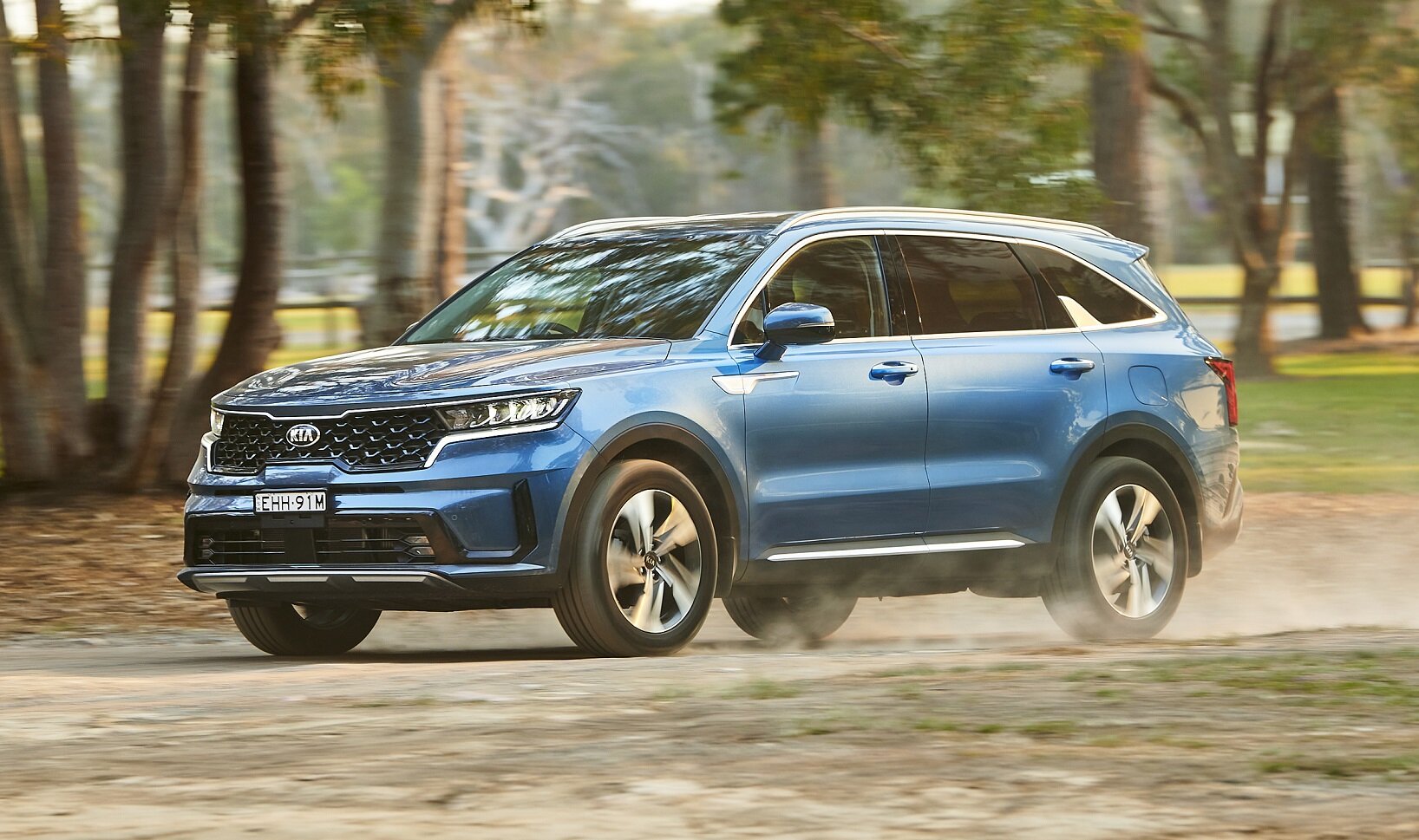
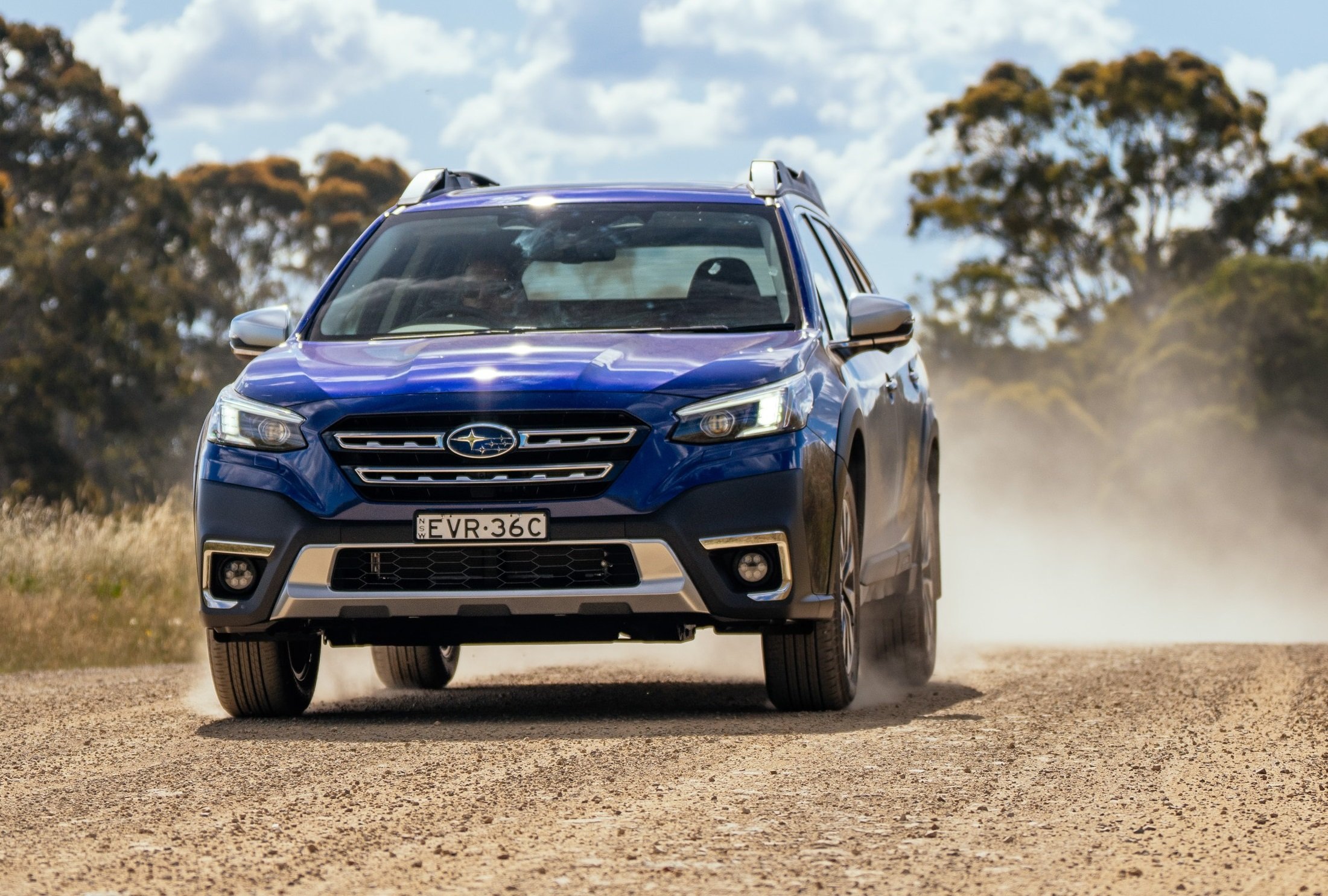

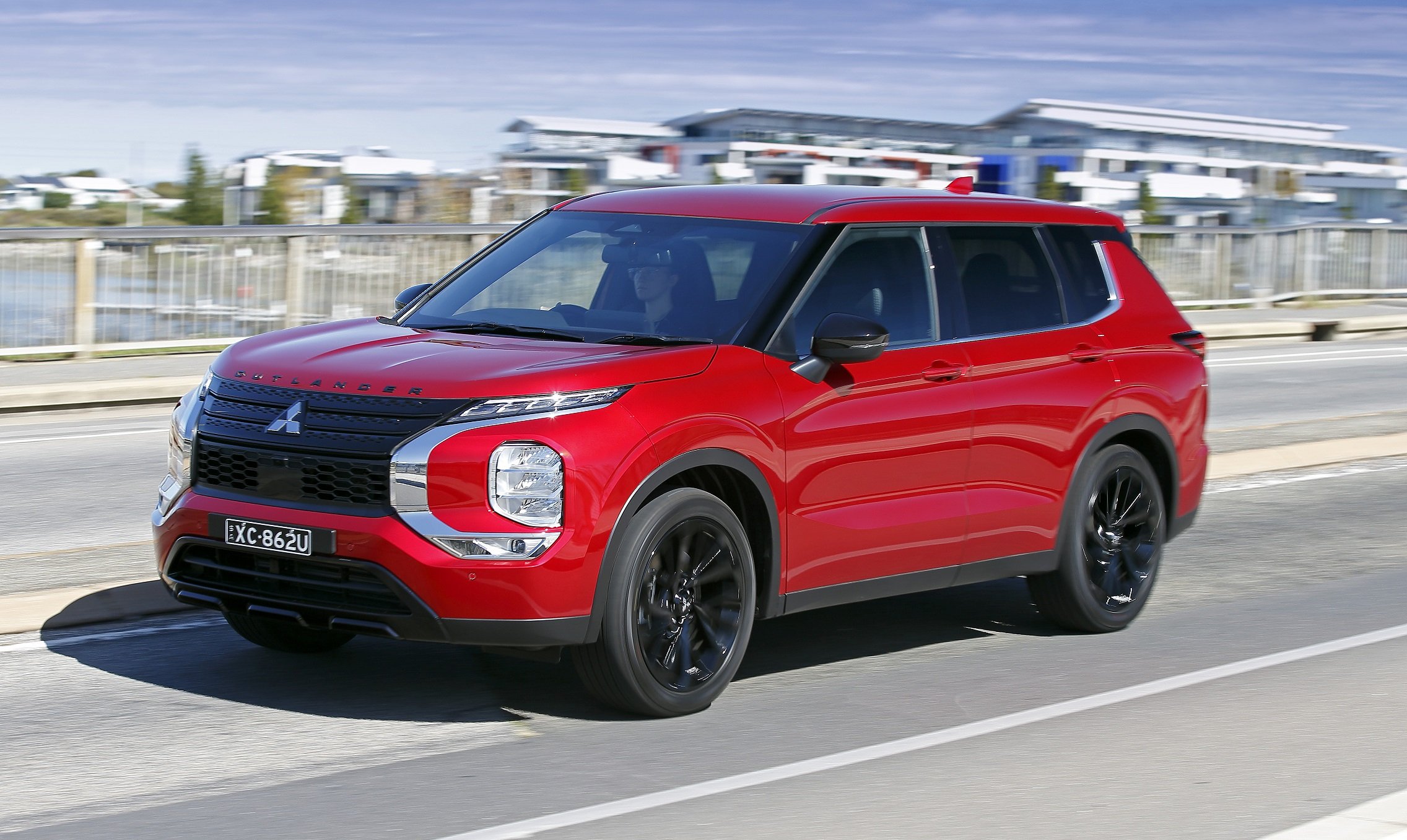
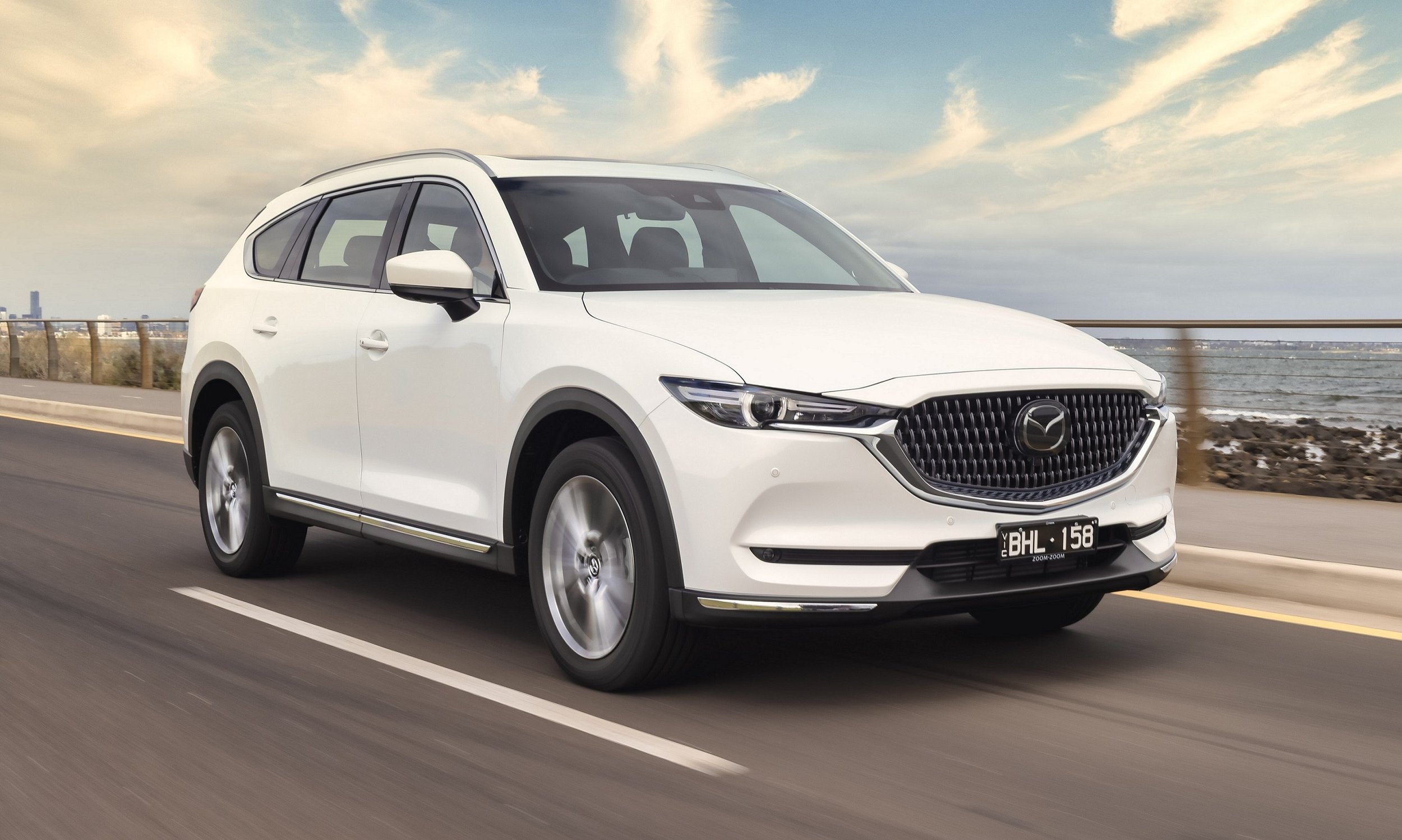







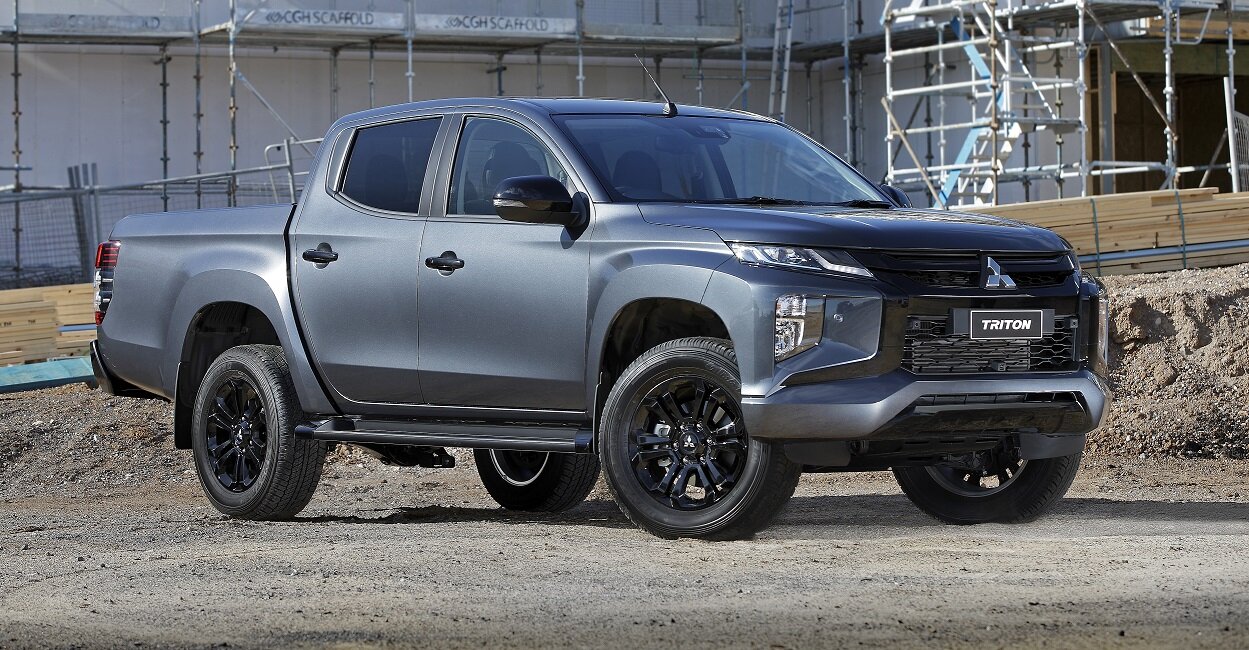
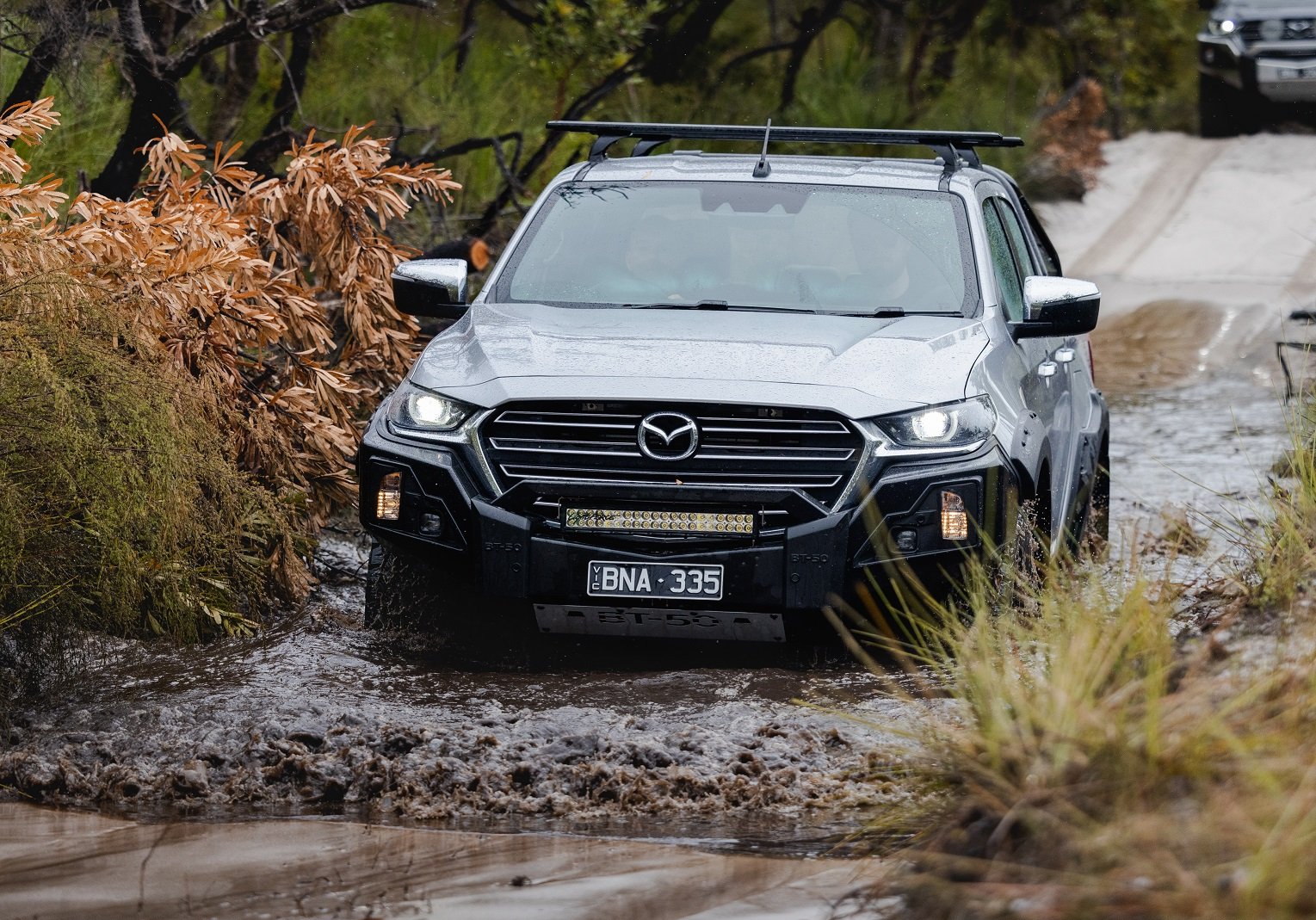
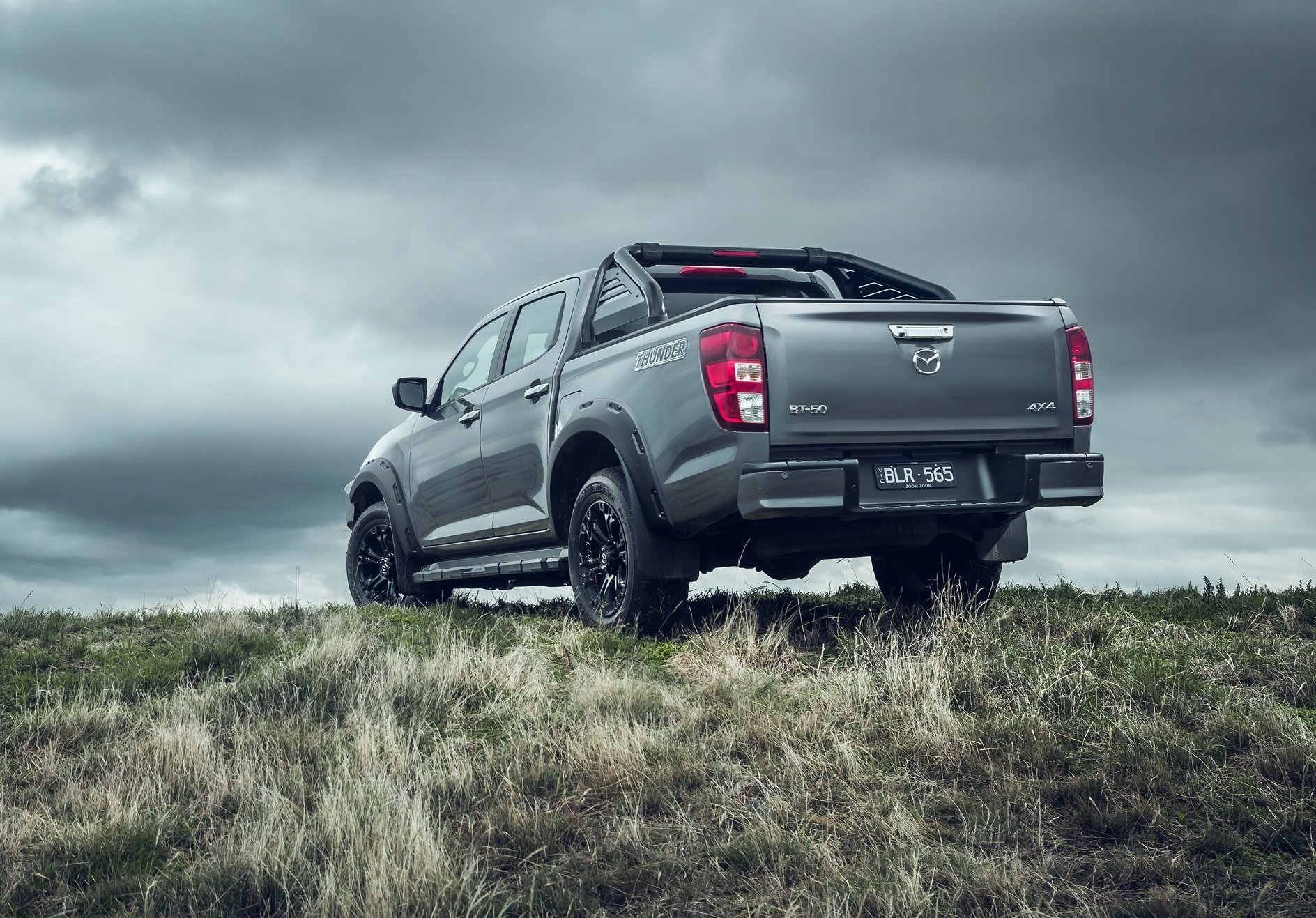



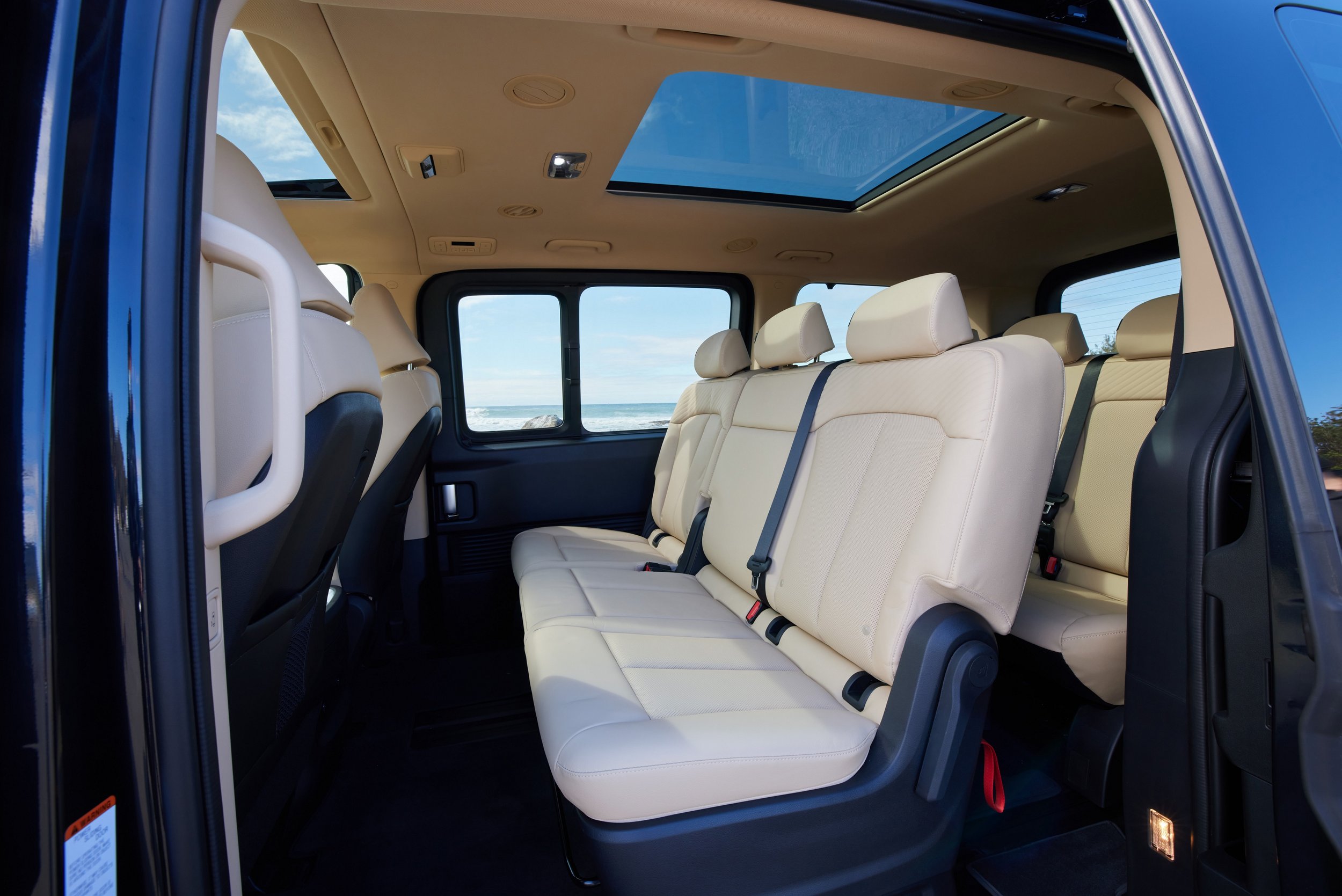
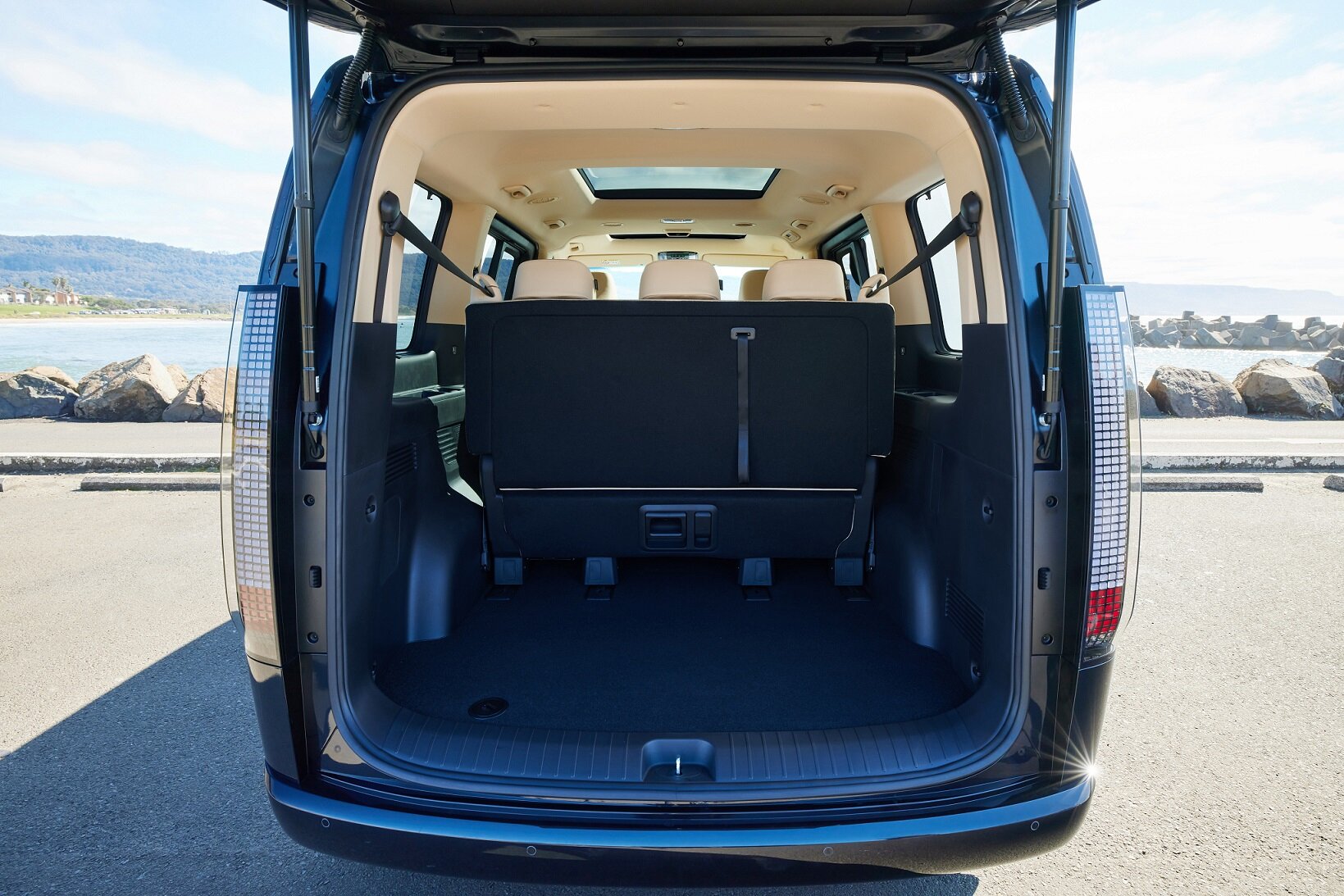











If you think Great Wall Motors can come along and offer a cut-price Toyota Prado on its first attempt, there are some glaring issues you need to consider before dropping your money on this LandCruiser lookalike.